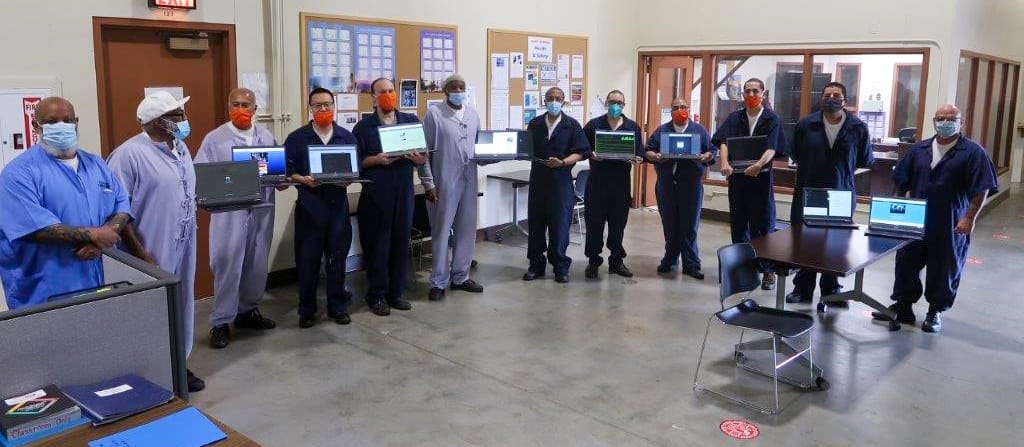Education Is a Key Factor in Reducing Offender Recidivism

Research shows that providing inmates with educational services furnishes them with the tools they need to lead happy, successful, productive, and crime-free lives. State and federal prisons should commit to making educational programming accessible to all offenders. Doing so will reduce recidivism, improve public safety, and save taxpayers money, all while keeping people out of prison and with their families where they belong.
The Current Lack of Educational Services
Education is a gateway to greater economic and social mobility for everyone, inmates included. Few factors in life serve as greater predictors of success than education. Unfortunately, educational programs are often lacking inside prisons, even as the incarcerated population is a demographic that desperately needs educational services. About 41% of prisoners in the U.S. do not hold a high school diploma, compared to 18% within the general population. Similarly, about half of Americans receive a college degree, but only one-quarter of inmates hold degrees.1
Sadly, prisons are not putting in the work needed to ensure inmates have access to quality educational services. Only 35% of state prisons provide college-level courses, and these programs only serve 6% of inmates. Even as the Second Chance Pell Pilot Program sought to allow 12,000 qualified incarcerated students to take college-level courses while in prison, that program’s future is uncertain and only accounts for less than 1% of the total Pell program’s funding. Ultimately, inmates have limited access to high school educational services and extremely limited access to college-level educational services.

The Current Prison Model Is Extremely Expensive
The current model of simply removing lawbreakers from society and locking them up for certain periods is not itself an effective rehabilitation model. In any given year, the U.S. spends about $80 billion on correctional institutions. From 1979 to 2013, state and local spending on prisons and jails increased at a rate much faster than the funding rate of K-12 public education over the same years. For example, in some states, budget allocations have created a situation in which the state spends three times the funds on inmates than on schoolchildren.2
All of this has occurred as nearly half of offenders are rearrested within eight years of their release, most of whom are re-convicted and must serve additional prison sentences. Further, additional research has found that the fewer educational services an inmate has access to in prison, the more likely they are to return to a life of crime upon release. Individuals who do not complete high school have a 60% chance of returning to a life of crime, whereas individuals with a college degree only have a 19% chance of returning to a life of crime.3
That means the prison system under its current model is expensive and ineffective, necessitating reform.
The Data Supporting Education for Offenders
Educational services are a cost-effective way to reduce recidivism, improve public safety, and produce reformed, rehabilitated individuals who will be productive, contributing members of society. Beyond the logical argument that educated individuals have the tools to tackle life and are therefore not compelled to resort to a life of crime as a coping mechanism, the data also supports an educational model for offenders.
According to the RAND Corporation, inmates who participate in educational programming while in prison are 43% less likely to return to prison after release. Further, prisons that provide higher-ed services for offenders experience less violence among incarcerated individuals than prisons that do not provide such services. Also, studies have found an association between prison education and increased personal income, lower unemployment, greater political engagement, more volunteering time, and improved health outcomes.4

Education is a much-needed ladder towards higher potential and opportunities. Formerly incarcerated individuals with little to no education are much more likely to leave prison and find themselves without the financial resources or social support systems they need to build a productive, meaningful life. That makes them more vulnerable to committing criminal acts. Conversely, educated prisoners are more likely to get and keep a job and more likely to find like-minded support groups. They are more likely to reintegrate into their family group and other social networks easily.
Perhaps most importantly, educational programming for offenders is a wise investment. Any form of educational services has benefits and results in less money spent on incarceration in the long run. For example, for every dollar spent on prison education, taxpayers will save about four to five dollars that would have otherwise been spent on incarceration.
Finally, if the recidivism rate goes down, it will have the net effect of boosting overall economic prosperity. When fewer working-age Americans are sent back to prison due to the commission of crimes, this acts as a net benefit to the economy, not a net detraction. For example, the U.S. economy currently loses about $60 billion per year in lost labor due to incarceration. If the recidivism rate dropped close to 0% rather than 50% where it currently stands, that $60 billion per year in lost labor would also decrease significantly.
What Does Educational Programming for Offenders Look Like?
Educational programming for offenders takes many shapes and forms. Missouri implemented a basic learning and high school degree program in prisons, and that state now saves about $25,000 for every inmate who leaves prison and does not return. In New York, the state government awarded $7 million in 2017 to enable Cornell University, New York University, and others to offer classes in prison. In San Quentin Prison, the Last Mile nonprofit program partnered with the California Department of Corrections and Rehabilitation to provide incarcerated individuals with coding experience.

The Last Mile pilot program at Pelican Bay State Prison. Image Courtesy of cdcr.ca.gov
Some organizations seek to use educational services to help offenders get to the root cause of their lawbreaking and overcome the underlying issues that led to crime. Criminon is one such organization. Criminon’s mission is to help inmates address the factors that produce and precipitate criminal behavior. Criminon also works to reduce recidivism by providing educational tools and life skills to those in need so that they may rejoin society as responsible and contributing members.
When inmates have access to educational services that help them overcome their past and prepare for their future, they are far less likely to return to a life of crime. Everyone wins when former offenders don’t return to a life of crime after their release from prison.
Sources:
- AP. “Education Opportunities in Prison Are Key to Reducing Crime.” The Center for American Progress, 2018. americanprogress.org
- THP. “Ten Economic Facts about Crime and Incarceration in the United States.” The Hamilton Project, 2014. hamiltonproject.org
- USSC. “Recidivism Among Federal Offenders: A Comprehensive Overview.” United States Sentencing Commission, 2016. ussc.gov
- TRC. “The Case for Correctional Education in U.S. Prisons.” The Rand Corporation, 2016. rand.org




